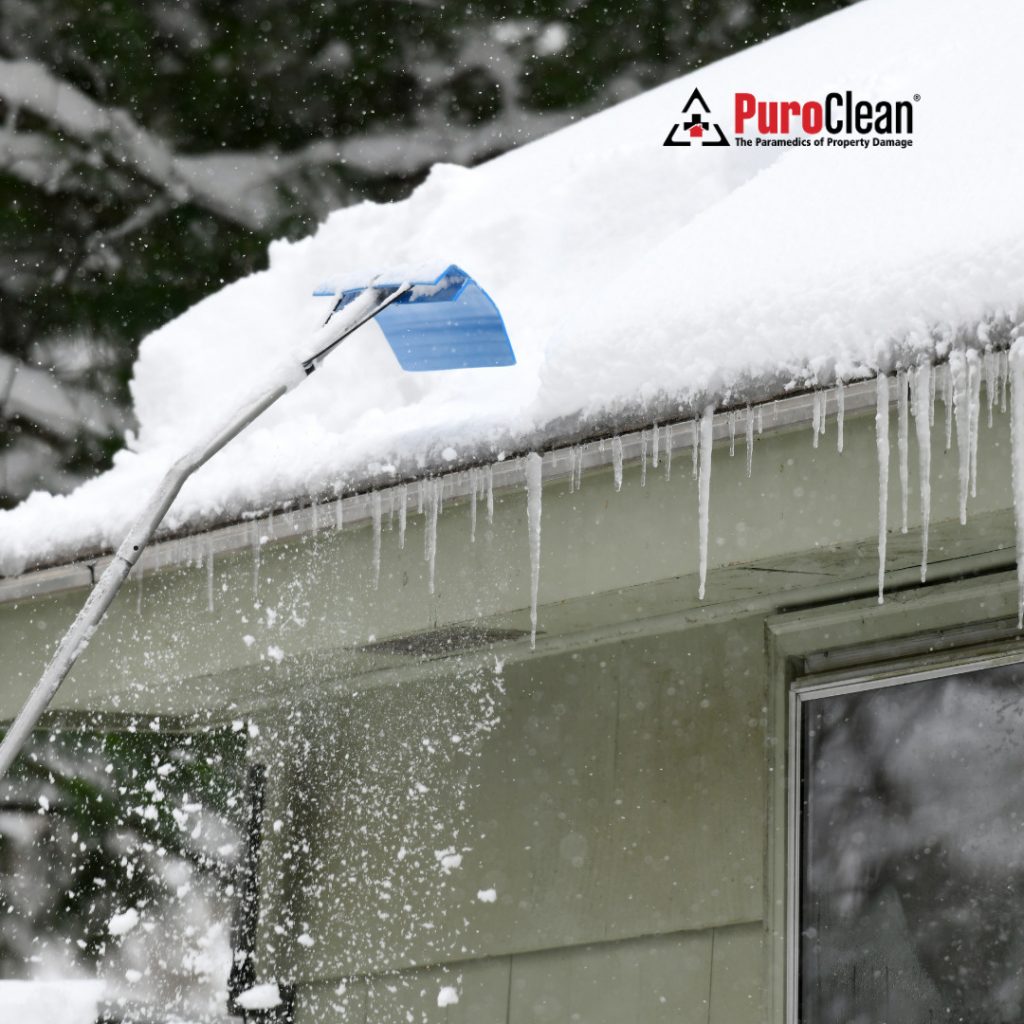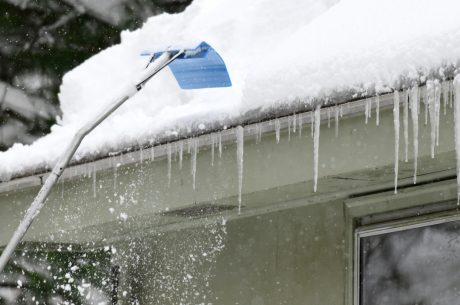Ice dams can turn Salt Lake City’s magical winter wonderland into a property owner’s nightmare. These icy build-ups on roofs, often caused by snow and fluctuating temperatures, can lead to water leaks and costly repairs if not addressed. While the snowy landscapes and cozy vibes of winter are enchanting, ice dams remind us of the challenges that come with the season. The good news is that with the right precautions, you can protect your home and enjoy a worry-free winter. Let’s explore what ice dams are, how they form, and the most effective ways to safeguard your property.
Table of Contents
What Are Ice Dams?
Imagine this: Snow blankets your roof, some of it melts, and then that water refreezes along the edge of your roof. That’s an ice dam. These icy ridges block melting snow from draining properly, and when water gets trapped, it can seep into your home’s walls, ceilings, and insulation. The damage can be costly and stressful to repair.
How Do Ice Dams Form?
Ice dams form when:
- Poor Ventilation and Insulation – Without proper attic insulation and ventilation, heat escapes unevenly, making ice dam formation more likely. Learn more about improving your insulation and ventilation from the U.S. Department of Energy.
- Snow Piles Up on Your Roof – A thick layer of snow is the starting point for ice dams.
- Uneven Roof Temperatures – Heat from your home rises, warming the roof and melting the snow. The melted water flows down to the roof’s colder edges, where it refreezes.
Why You Should Worry About Ice Dams
Ice dams can wreak havoc on your home. Here’s how:
- Roof Damage: The weight and pressure of ice can loosen shingles and even damage the roof structure.
- Water Leaks: Trapped water can seep into your home, damaging walls, ceilings, and insulation.
- Gutter Damage: Ice dams strain your gutters, sometimes pulling them away from the roof.
- Higher Energy Bills: Poor insulation leads to heat loss, making your heating system work overtime.
- Mold and Mildew: Water leaks create a perfect environment for mold, which can harm your health.
How to Prevent Ice Dams
The key to stopping ice dams is being proactive. Here are some effective strategies:
- Beef Up Your Attic Insulation – Good insulation keeps heat where it belongs—inside your home. Here’s how to make it work for you:
- Seal Air Leaks: Use spray foam or caulk to close gaps around vents, pipes, and electrical fixtures. Check out the Energy Star guide for more tips.
- Install Adequate Insulation: Ensure your attic insulation meets the recommended R-value for Salt Lake City’s climate.
2. Improve Ventilation – Ventilation keeps your attic’s temperature consistent, preventing snow from melting unevenly. Options include:
- Soffit and Ridge Vents: These vents allow air to flow naturally through your attic.
- Attic Fans: A thermostatically controlled attic fan can boost airflow during winter. Learn about ventilation strategies from Energy Star.
3. Maintain Your Roof and Gutters
Regular upkeep can prevent small issues from becoming big problems:
- Inspect Your Roof: Check for loose shingles or other vulnerabilities before winter hits.
- Clean Gutters: Clear leaves and debris to ensure proper drainage.
- Trim Trees: Cut back branches that drop snow and debris onto your roof.
4. Remove Snow Safely
Clearing snow from your roof reduces the chances of ice dam formation:
- Use a Roof Rake: A telescoping roof rake lets you remove snow from the ground.
- Call the Pros: For heavy snow or steep roofs, hire a professional to handle it safely.
5. Install an Ice and Water Shield
Applying this membrane under your shingles provides extra protection against water damage. It’s a smart investment if you live in a snowy area.
6. Use Heated Cables
Heated cables installed along your roof’s edge can keep ice from forming. Be sure to have them installed by a professional for best results.

What to Do If You Have an Ice Dam
Sometimes, even with the best preparation, ice dams happen. Here’s how to deal with them safely:
- Melt the Ice with Calcium Chloride
- Fill a sock or pantyhose with calcium chloride de-icer.
- Place it across the ice dam to melt a channel for water to escape.
- Avoid rock salt, which can damage your roof and gutters.
2. Use Steam
Professional ice dam removal services use steamers to melt ice without damaging your roof. It’s the safest and most effective option.
3. Call the Experts
If ice dams are causing significant problems, contact PuroClean of Layton. We’re here to help with safe, efficient solutions.
How PuroClean of Layton Can Help
At PuroClean of Layton, we specialize in protecting your property from winter hazards like ice dams. Here’s how we can assist:
- Ice Dam Removal: We use safe techniques to remove ice dams without harming your roof.
- Water Damage Restoration: If leaks occur, we act fast to mitigate damage and restore your home.
- Mold Remediation: Our team eliminates mold caused by water intrusion, ensuring a healthy home environment.
With our expertise, you can enjoy peace of mind this winter. Learn more about our services here.
Winter in Salt Lake City doesn’t have to be a season of worry. By taking preventative measures like improving insulation, ensuring proper ventilation, and removing snow, you can protect your property from ice dams. And if you need a helping hand, PuroClean of Layton is just a call away.
Contact us today at (801) 898-5554 to schedule a consultation and keep your home safe and cozy all winter long. For more on how PuroClean of Layton can help homeowners this winter, read our blog post on the 14 Essential Winter Safety Tips for Salt Lake City Property Owners to Protect and Thrive




 PuroClean of Layton
PuroClean of Layton